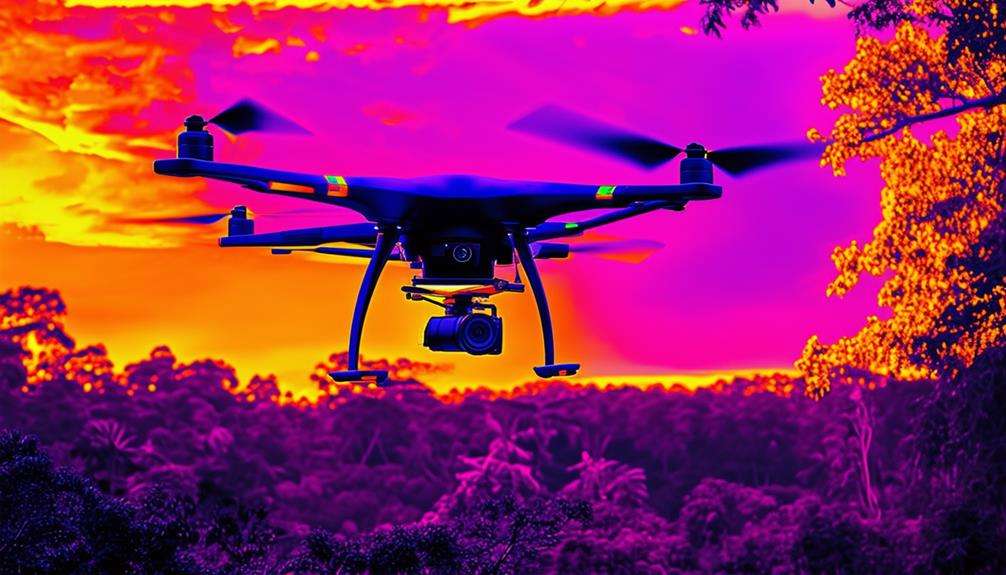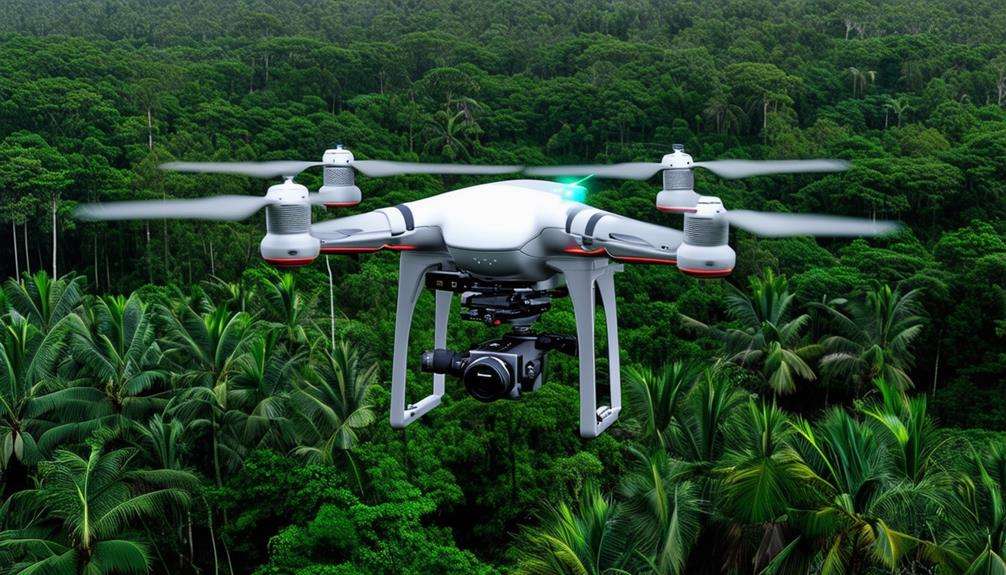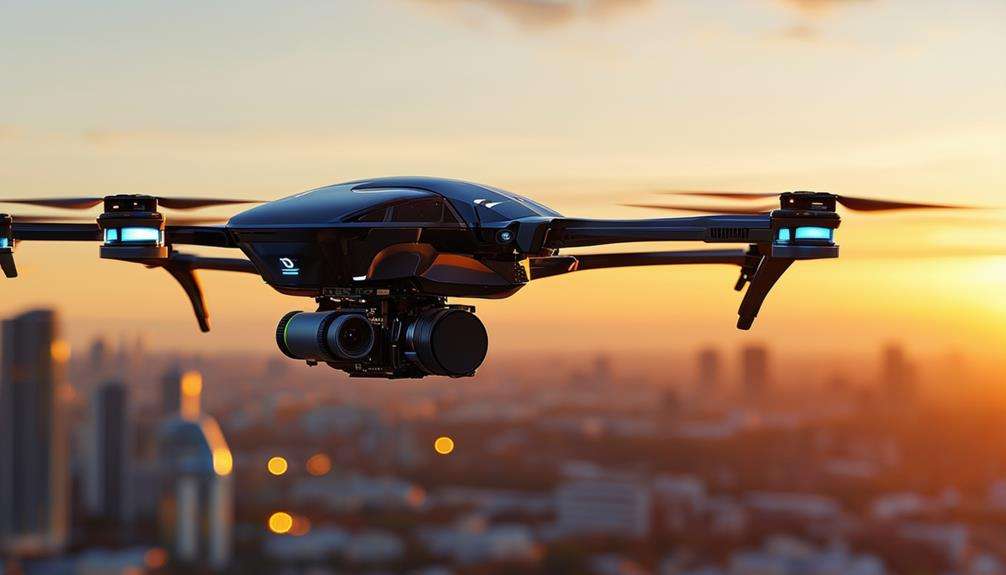The Benefits of Using UAVS in Insurance: Assessing Claims With Drone Data
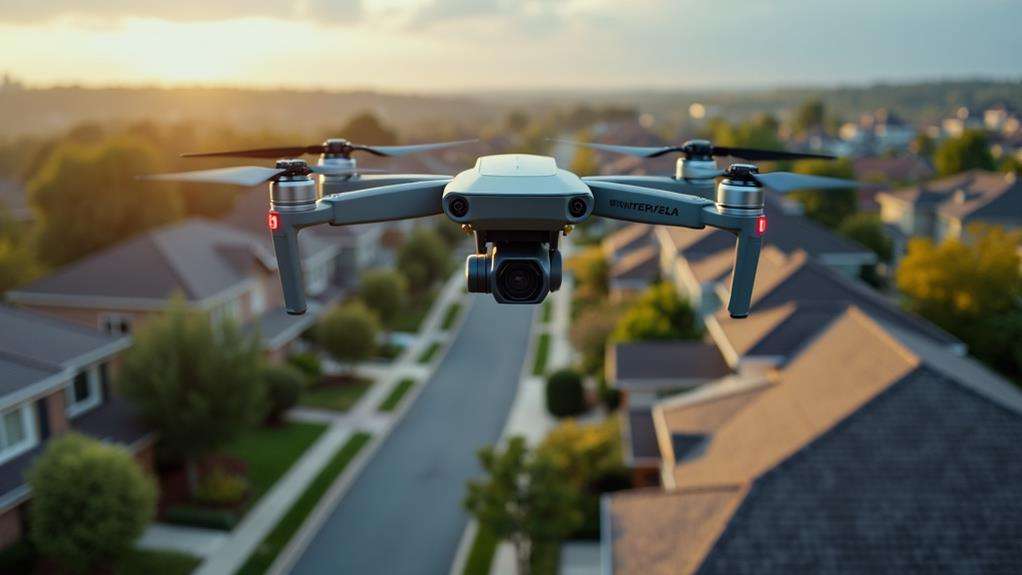
Integrating UAVs into the insurance claims process enhances safety and efficiency for adjusters. Drones allow for inspections from a safe distance, reducing injury risks and expediting evaluations in hazardous areas. The high-resolution images and real-time data they capture facilitate faster claims processing and more accurate documentation, thereby improving customer satisfaction. Additionally, UAVs are instrumental in fraud detection, offering comprehensive visual evidence for more reliable claims management. However, it is essential to consider potential challenges such as regulatory compliance, data privacy, and the need for specialized training to maximize the benefits of UAV technology in insurance.
Enhanced Safety for Adjusters
Drones are transforming safety protocols for insurance adjusters by eliminating the need to physically enter hazardous environments. Utilizing drones allows for claims assessments to be conducted from a safe distance, significantly reducing the risk of injury. These aerial devices enable the inspection of hard-to-reach areas, such as rooftops and high-rise buildings, without the dangers associated with ladders or scaffolding. This results in enhanced safety and peace of mind, knowing that operational safety is prioritized.
Following a disaster, drones facilitate rapid post-disaster evaluations, allowing inspections to be completed up to 10 times faster than traditional methods. This efficiency not only reduces time spent in unsafe locations but also minimizes overall exposure to potential hazards. Additionally, the thermal imaging capabilities of drones enhance safety by detecting hidden damages, such as moisture intrusion, without requiring entry into potentially dangerous situations.
Increased Efficiency in Inspections
Drones can significantly enhance inspection efficiency by swiftly gathering data and capturing high-resolution images. This detailed information accelerates claim processing by allowing for quick and precise damage assessments. Additionally, drones can easily access hard-to-reach areas, providing a comprehensive overview that traditional methods might miss.
Rapid Data Collection
Leveraging advanced technology, UAVs (Unmanned Aerial Vehicles) have transformed the speed and efficiency of inspections, collecting data up to 10 times faster than traditional methods. By using drones for rapid data collection, insurance companies can significantly enhance their operational efficiency. Imagine assessing hundreds of high-resolution aerial images in just 20 minutes. This capability drastically reduces the time required for on-site evaluations and accelerates the entire claims process.
Drones excel in swiftly mapping extensive areas, allowing insurers to evaluate up to 300 buildings in just 10 days following a disaster. This speed translates into quicker damage assessments and faster claims processing, ultimately leading to improved customer satisfaction. By cutting inspection times by up to 75%, drones enable faster claims settlement, benefiting both insurers and policyholders.
Real-time data collected by drones streamlines the claims management process, allowing insurance companies to respond more promptly to clients' needs and ensuring a smoother customer experience. In essence, drones offer a game-changing advantage in the insurance industry by making rapid data collection an efficient part of the claims process.
Enhanced Visual Evidence
Enhanced visual evidence provided by UAVs (drones) significantly increases the efficiency of inspections. Drones can complete inspections in as little as 20 minutes, capturing hundreds of high-resolution images. This rapid collection of visual documentation speeds up the claims assessment process. The aerial views offered by drones allow for effortless inspection of hard-to-reach areas, which would otherwise be time-consuming or difficult with traditional methods.
Drones can reduce on-site evaluation times by up to 75%, leading to quicker assessments and improved customer satisfaction. This efficiency is crucial when handling multiple claims or in disaster scenarios where time is critical. Additionally, drones excel in identifying hidden damages, such as structural issues or thermal leaks, that might be missed during ground-level inspections. This capability enhances the accuracy of damage assessments, ensuring a comprehensive understanding of the situation.
Faster Claim Processing
The use of UAVs in the insurance sector offers a substantial advantage in faster claim processing. Drones can reduce on-site evaluation times by up to 75%, facilitating quicker claims processing and settlement. Inspections conducted with drones are ten times faster than traditional manual methods, enabling rapid data collection and timely claims evaluation.
Insurance companies greatly benefit from drones' ability to efficiently survey large areas. For instance, following a significant disaster, drones can assess 300 buildings in just 10 days. This speed accelerates the claims process and enhances the accuracy of damage assessments through high-resolution aerial imagery, allowing for quicker and more reliable claims decisions.
Integrating drone technology also reduces operational costs and improves customer satisfaction. Faster claim processing ensures customers receive settlements sooner, enhancing their overall experience. Additionally, comprehensive and swift data collection aids in effective risk assessment, further optimizing operations. Embracing drones for inspections significantly expedites claims processing, transforming how insurance companies handle damage assessments and improving the entire customer service process.
Real-Time Data Collection
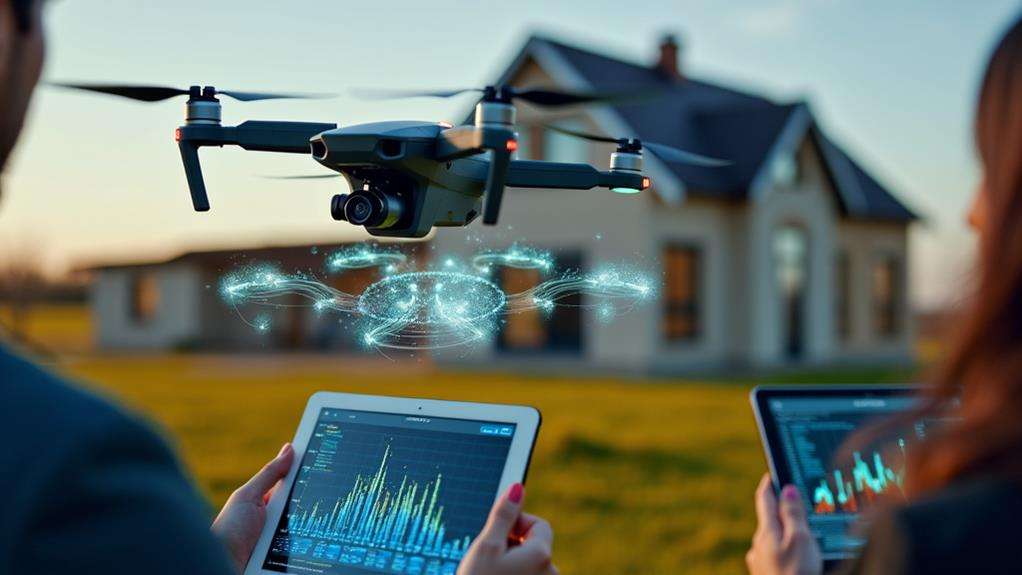
Drones are transforming the way insurers collect real-time data during claims assessments. By deploying drones, insurers can capture hundreds of high-resolution images in just 20 minutes, providing a wealth of actionable data. This immediate access facilitates quicker claims decisions, significantly enhancing the overall customer experience. For instance, during disasters like Hurricane Florence and Michael, drones efficiently surveyed extensive areas, allowing for rapid damage evaluation and faster claim processing, ensuring customers received timely assistance.
Additionally, operational costs are reduced as drones can access hard-to-reach locations, ensuring critical data is collected efficiently. This capability decreases the time needed for on-site evaluations by up to 75%, making the process more efficient and cost-effective. Real-time data collection also supports accurate risk management, enabling insurers to make well-informed decisions based on comprehensive aerial assessments. This allows for better damage assessment and risk management, ultimately improving service quality and reliability.
High-Quality Visual Imagery
Utilizing drones for high-resolution imagery enhances the precision and comprehensiveness of claims assessments by providing clear visual evidence of damages. Their capability to access difficult-to-reach areas ensures thorough inspections, often uncovering hidden issues such as roof leaks that ground-level assessments might overlook. By rapidly capturing hundreds of images, drones expedite the documentation process and improve the accuracy of repair cost estimates, leading to quicker claim settlements.
Enhanced Damage Documentation
Insurers can significantly improve damage documentation by utilizing high-resolution drone imagery. Drones capture detailed, high-resolution images, providing comprehensive visual evidence for precise claims assessments. This technology accelerates data collection by capturing extensive damage data within minutes and unveils hidden structural issues that are not visible from the ground.
Real-time data collection with drones enables informed decision-making based on the most recent visual evidence. This capability is crucial for fraud prevention, offering clear before-and-after visual proof of conditions. High-quality images make the claims process more efficient, thorough, and reliable.
Key Benefits:
| Benefit | Description |
|---|---|
| High-Resolution Images | Capture detailed damage documentation |
| Reveal Structural Issues | Identify hidden problems not visible from the ground |
| Real-Time Data Collection | Provide up-to-date visual evidence for timely decision-making |
Accurate Site Assessments
Insurers can leverage drone technology to capture high-resolution images and videos, significantly enhancing the precision of site assessments during claims processing. Drones enable insurance companies to obtain detailed visual documentation, improving the accuracy of damage evaluation. This aerial imagery allows for the inspection of hard-to-reach areas, such as rooftops and tall structures, ensuring thorough coverage of the property.
The benefits extend beyond just visual documentation. Drones can reduce the time required for on-site assessments by up to 75%, expediting claims processing and enhancing customer satisfaction. Comprehensive pre- and post-event documentation simplifies the identification and validation of damages, thereby reducing the likelihood of fraudulent claims. This reliable data supports more informed decision-making, ultimately protecting the insurer's financial interests.
Moreover, drone technology can generate 3D models and thermal images, providing deeper insights into the structural integrity and hidden damages of properties. This detailed documentation ensures that both obvious and potential issues are identified, which might be missed during a traditional inspection. In summary, drones offer a robust toolset for more accurate site assessments, making the insurance process more efficient and effective.
Accelerated Claims Management
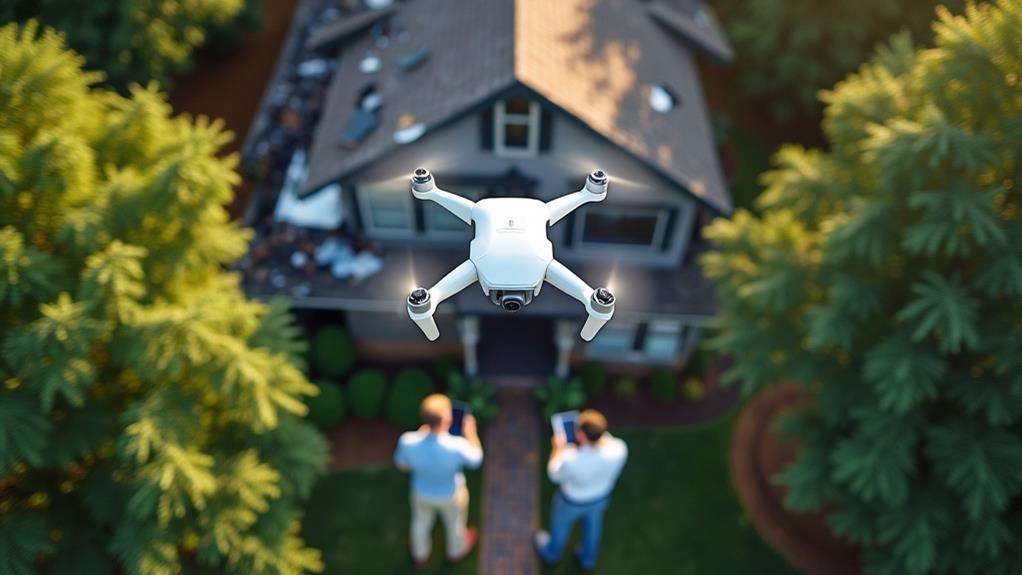
In today's insurance landscape, drones have revolutionized claims management by significantly reducing the time required for on-site evaluations. Utilizing real-time data and high-resolution imagery, drones enable faster and more accurate damage assessments, facilitating expedited claims settlements. This streamlined process benefits policyholders and enhances operational efficiency for insurers.
Consider these key advantages:
- Drones can cut on-site evaluation times by up to 75%, drastically speeding up the claims management process.
- High-resolution imagery from drones allows for quicker property inspections, ensuring precise damage assessments and faster decision-making.
- During disaster scenarios, such as Hurricane Irma, drones mapped 300 buildings in just 10 days, demonstrating their rapid data collection capabilities.
With drones, repair estimate times can decrease to as little as 4.5 days compared to traditional methods. This swift turnaround improves customer satisfaction and enables insurance companies to manage claims more efficiently. By incorporating drones into your claims management strategy, you are not only accelerating the process but also ensuring more accurate and reliable assessments. The operational efficiency gained from using drones in property inspections and damage assessments is transforming the insurance industry, making it more responsive and effective in meeting the needs of policyholders.
Fraud Detection and Prevention
Drones are revolutionizing fraud detection and prevention in the insurance industry by capturing high-resolution images at accident sites. This enables the validation of claims and reduces misrepresentation, addressing the $40 billion non-health insurance fraud problem in the U.S. With precise pre- and post-loss documentation, drones provide clear evidence of property conditions, deterring fraudulent claims and ensuring accurate claims settlement.
| Before Drones | With Drones |
|---|---|
| High operational costs | Reduced operational costs |
| Lengthy fraud investigations | Rapid fraud detection |
| Inconsistent data collection | Accurate data collection |
Drones enhance data collection capabilities, allowing rapid assessments that differentiate legitimate claims from those that are fabricated or exaggerated. By identifying maintenance issues before they escalate, drones improve risk management and decrease the likelihood of fraud related to pre-existing damage.
Insurance companies using drone technology benefit from more effective fraud mitigation strategies. Greater control over the claims process and improved data validation through artificial intelligence optimize operational efficiency. This enables the implementation of proactive and cost-effective risk management tactics, protecting the bottom line and ensuring fair claims settlements.
Regulatory Landscape and Compliance
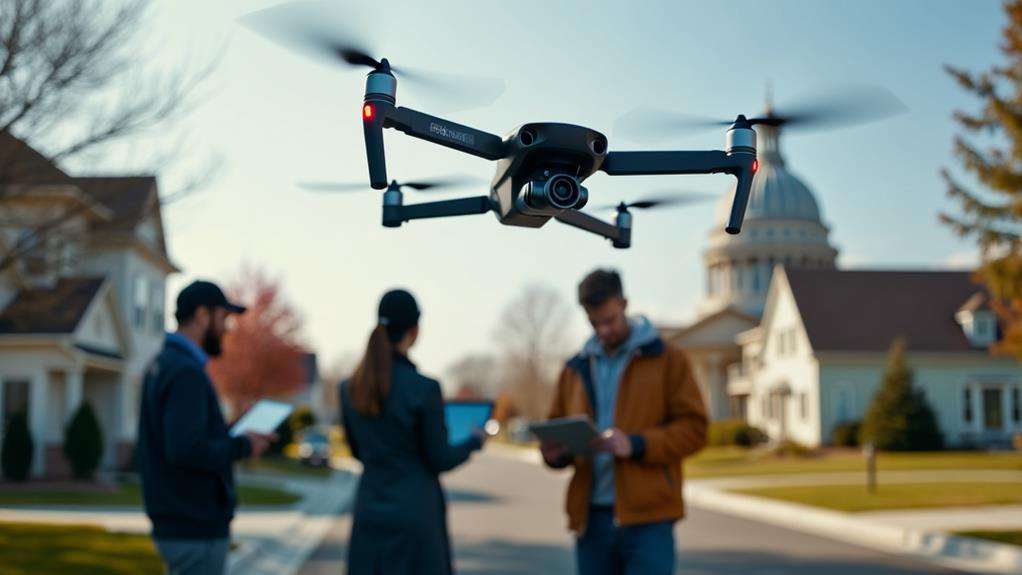
Navigating the regulatory landscape and ensuring compliance is pivotal for effectively utilizing UAVs in the insurance sector. The Federal Aviation Administration (FAA) and local regulations govern drone use in insurance, shaping both operational capabilities and compliance requirements. With projections of 450,000 commercial drones by 2022, grasping these regulations is essential.
- Local Regulations: Different countries enforce distinct rules. In the U.S., the FAA regulates commercial drone use, while the UK relies on the Civil Aviation Authority (CAA).
- Privacy Concerns: Adhering to data protection laws is crucial, as they can limit the extent of data collection. Ensuring compliance with privacy standards is essential.
- Exclusion Zones: Certain areas restrict drone operations. Awareness of these zones is necessary to avoid legal complications.
Compliance involves not only following FAA rules but also addressing privacy concerns and understanding exclusion zones. As drone technology advances, regulatory frameworks will evolve, making it vital to stay informed. This ensures that the use of drones in insurance remains within legal boundaries, enabling optimal claims assessment while protecting data integrity and operational compliance.
Future Trends and Innovations
As you navigate the complexities of regulatory compliance, it's evident that the future holds transformative potential for UAVs in insurance. Advances in drone technology, particularly with AI-driven analytics and robotic process automation (RPA), are poised to revolutionize data management. You will be able to process and analyze vast amounts of aerial imagery with unprecedented efficiency, enhancing claims evaluations and overall risk assessments.
The emergence of self-piloting drones promises significant cost savings, potentially reducing operational costs by nearly $7 billion annually. These drones streamline operations, eliminating the need for human-operated flights. Enhanced thermal imaging will further improve the accuracy of risk assessments, allowing for more precise claims evaluations.
Future trends also include the refinement of regulatory frameworks, facilitating broader acceptance and integration of drones in insurance practices. Collaborations between insurers and tech companies will foster innovative solutions, leading to the widespread adoption of drones in global insurance markets.
Here's a snapshot of expected innovations:
| Innovation | Benefits | Impact on Insurance |
|---|---|---|
| AI-driven analytics | Efficient data management | Enhanced claims evaluations |
| Self-piloting drones | Reduced operational costs | Streamlined operations |
| Enhanced thermal imaging | Accurate risk assessments | Precise claims evaluations |
These advancements will transform traditional claims handling processes, making your job easier and more efficient.


